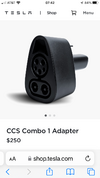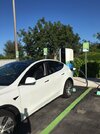After reading through many resources and analyzing my driving history, the reality is sinking in. I have come to realize that only about 60% of the battery capacity is normally usable, from 80% down to 20% SOC. So, while on a long road trip, this provides me the most practical way to charge everytime at a public charging facility. At this rate, my driving dynamics reveals that I must start looking for a charger every 150 miles. However, at home, since my daily commute is only 20 miles, I can continue charging up to 80%, and let the SOC drop down to 40% before charging again, every 5-7 days. FYI, I have the Tesla Wall Connector at home. So, I believe, I don't need to charge or keep my Tesla plugged in every night. What are your thoughts about these conclusions?




